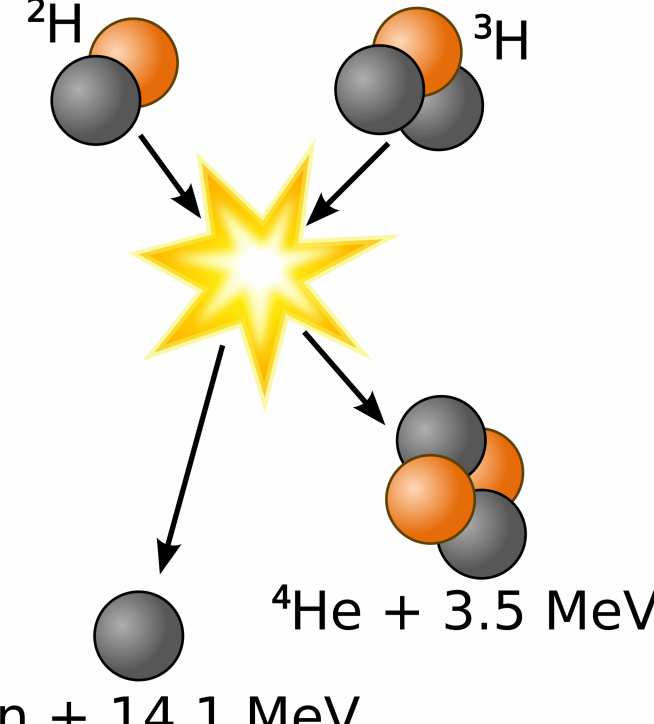Towards Nuclear Fusion Energy

For many years, scientists have striven to harness thermonuclear fusion — the process that powers the Sun and all the other stars — in a controlled fashion in the laboratory. This is because fusion-based nuclear power offers the potential for a clean and almost limitless supply of energy. At Imperial College, we are investigating a technique to achieve fusion by using the world’s most powerful X-ray source: the wire array Z-pinch.
In a fusion reaction, two light nuclei are squeezed together until they react to form a single heavier nucleus. For example, the heavy isotopes of hydrogen — deuterium and tritium — can react to form a helium nucleus. The mass of the helium nucleus is less than that of the two hydrogen isotopes, and it is this mass difference that can be converted into energy — according to Einstein’s famous relation E=mc2. The energy produced in fusion reactions is enormous, such that just one gram of fusion fuel has the potential to produce more energy than burning 10 tonnes of coal. The difficulty with fusion is that the nuclei of deuterium and tritium are both positively charged and therefore repel one another. Thus, in order to get close enough to fuse, the nuclei must be sufficiently energetic to overcome their mutual electrostatic repulsion. In stars and in the laboratory this is achieved by heating the fuel until it becomes a plasma — an ionised gas — with a temperature of 10-100 million degrees. The key to controllable fusion power is to confine this high-temperature plasma for long enough to extract an appreciable amount of energy.
One approach to this problem has been the Inertial Confinement Fusion or ICF concept. In ICF experiments, intense radiation in the form of laser light, X-rays or energetic particles bombard a spherical capsule of deuterium and tritium fuel encased in a beryllium or plastic “ablater”. Rapid heating and expansion of the ablater surface has an effect equivalent to covering the pellet in multiple miniature rockets.
The fuel responds by imploding, compressing by a factor of 1000-10,000, with temperatures reaching 100 million degrees. Fusion then initiates, igniting and burning up the fuel before it has a chance to expand. In order to achieve these high levels of compression, the irradiation of the target has to be incredibly uniform. One technique of achieving the desired uniformity is known as “indirect drive ICF”, where the radiation source is used to heat a wall or “hohlraum” surrounding the capsule to 2-3 million degrees. X-rays from the hohlraum then provide a highly uniform, distributed radiation source allowing the capsule to implode more symmetrically than with direct illumination. Most experiments to date have used lasers to heat the hohlraum wall. A potentially more efficient and cost effective method, however, is to use X-rays generated by an imploding wire array Z-pinch.
When a current of millions of amperes is applied to a cylindrical arrangement of fine metallic wires, the current not only heats the wires until they become plasma, but also generates a magnetic field which then pulls this plasma to the common axis causing a rapid implosion. When the plasma reaches the axis, this kinetic energy becomes thermal energy resulting in a plasma of very high temperature and density. The x-ray production in such plasmas is enormous, producing up to 2 million joules of X-rays in a burst just a few billionths of a second long (with peak x-ray powers reaching 280 million million Watts). Whilst this phenomenal x-ray power production makes the wire array Z-pinch by far the most powerful laboratory source of x-rays, it still falls short (by roughly a factor of 8) of the level required to implode a capsule and achieve fusion.
Using MAGPIE, we are presently trying to understand what limits the x-ray power that can be achieved and are investigating ways of increasing it further. MAGPIE is almost unique in being of sufficient power to implode wire arrays whilst at the same time providing sufficient access to fully diagnose the behaviour of wire array implosions.
Useful Links
